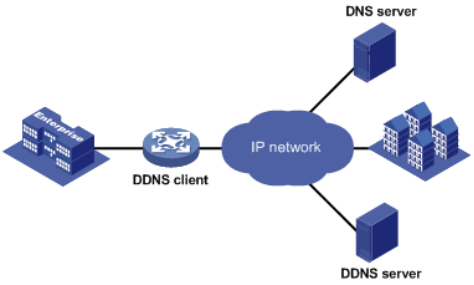Application of DDNS(dynamic domain name service ) in security
With the rapid development of network technology today, the use of dynamic domain name system (DDNS) in security has gradually declined, even disappeared. But now many network cameras, network hard disk video recorders still retain the function of DDNS. Here we review the use of DDNS and its application in the field of security.
There is still a technical article about DDNS written around 2010 on the official website of Hikvision – “Internet video monitoring solution based on dynamic IP“(in chinese). Once upon a time, when P2P technology was not popular, network conditions were limited, private network, static IP and many other harsh conditions were difficult to meet, the only choice to achieve remote video monitoring was through dynamic domain name resolution. 3322, peanut shell is a well-known service provider providing DDNS services, which is still providing services.
DDNS definition
DDNS is short for dynamic DNS, which means dynamic DNS. It is a kind of technology in the domain name system (DNS) to automatically update the content of the name server. Specifically, dynamic DNS refers the Internet domain name to an IP address that may change frequently, so that devices that often change location and configuration (such as webcam, NVR, etc.) can continuously update the IP address. In this way, Internet users can connect to this device through this domain name.
From the root, because there is no static public IP, we need DDNS. In theory, every device on the Internet should have a static public IP address. The reason why the operators have not assigned it to us is from a commercial point of view (static IP is provided to enterprise servers, enterprise applications, and higher profits), and the other reason is that the IPv4 address is really limited. After the popularity of IPv6, the problem of limited static IP resources can be fundamentally solved. Of course, this is the following.
The principle of DDNS
The operation of DDNS is divided into two parts, one is DDNS server, which is provided by DDNS service provider. One is DDNS client. General routers and network cameras have built-in DDNS client service. If not, we need to run DDNS client on the computer.
The process of domain name resolution is like this. DDNS is to map the user’s dynamic IP address to a fixed domain name resolution service. Every time the user connects to the network, the client program will send the host’s dynamic IP address to the server program at the service provider’s server through information transmission. The server program is responsible for providing DNS service and realizing dynamic domain name resolution.

The application of DDNS in security
Specifically, in the field of security video surveillance, DDNS is mainly used in the following steps:
- Determine the LAN IP address and related port of security equipment. General web login device can view;
- In the router, the IP address and related ports of the device are mapped;
- Run the DDNS service, router or security equipment. If there is a built-in DDNS service, you can directly set it in the corresponding location. If there is no need to run the corresponding DDNS client on the LAN computer;
- Confirm that the DDNS service is effective, and access the device through the DDNS domain name or public IP.
DDNS service provider
| Service provider | Url |
|---|---|
| Oray | https://hsk.oray.com/ |
| 3322 | http://www.pubyun.com/ |
| GNway | https://www.gnway.com/prod/gnhost/ |
| DYN | https://account.dyn.com/ |
| no ip | https://www.noip.com/ |
| dynu | https://www.dynu.com/zh-CN/ |


Leave a Reply
Want to join the discussion?Feel free to contribute!